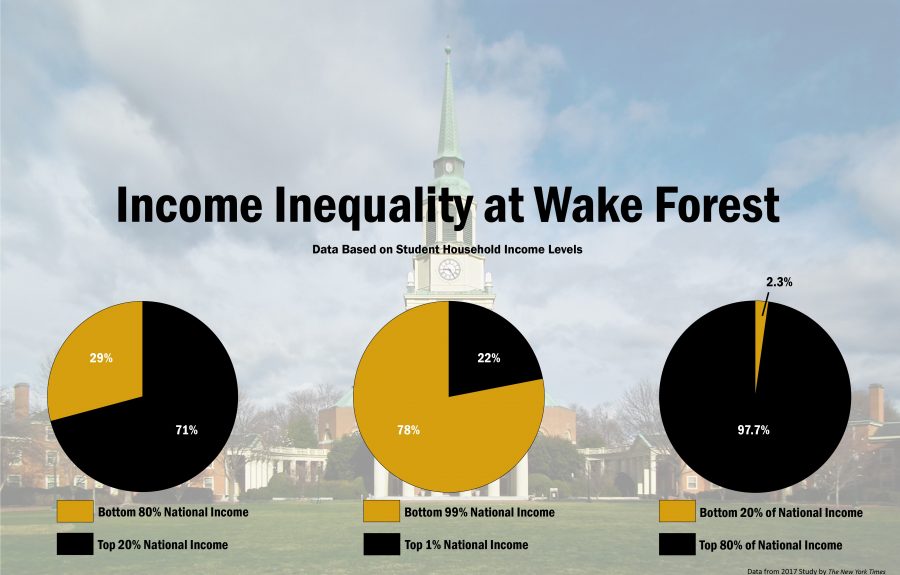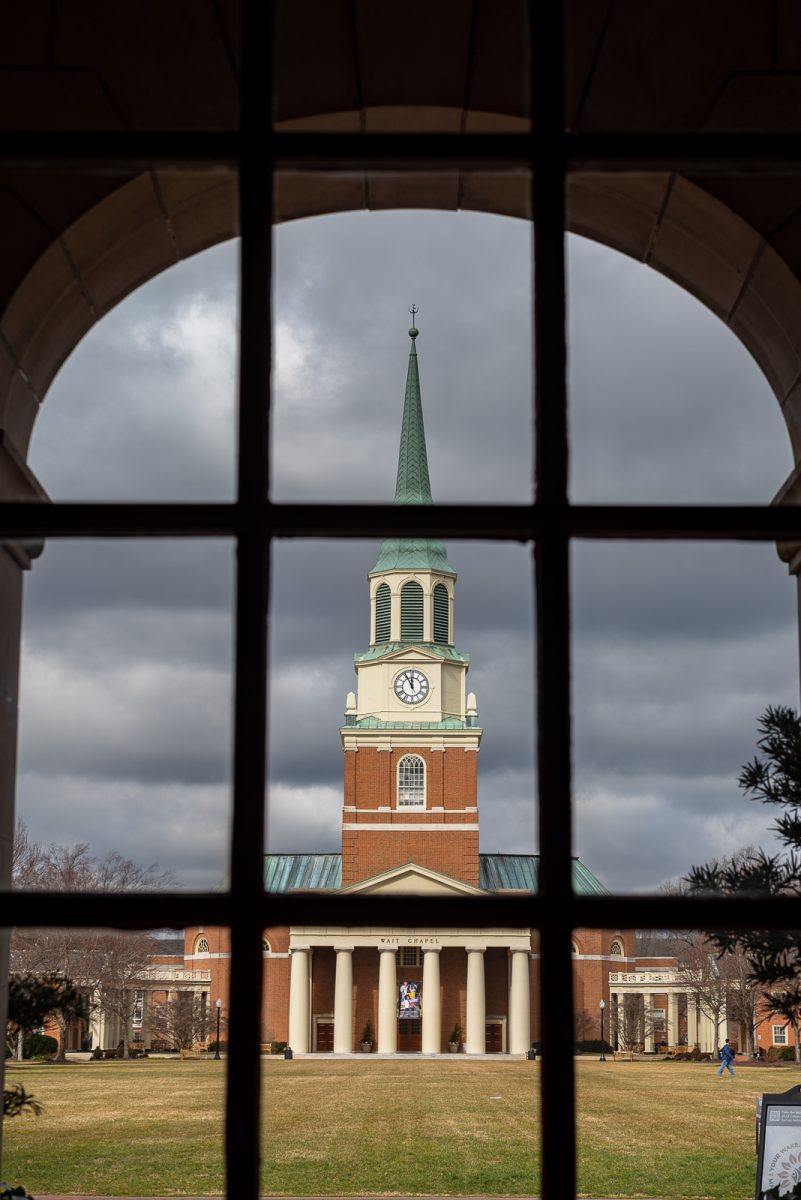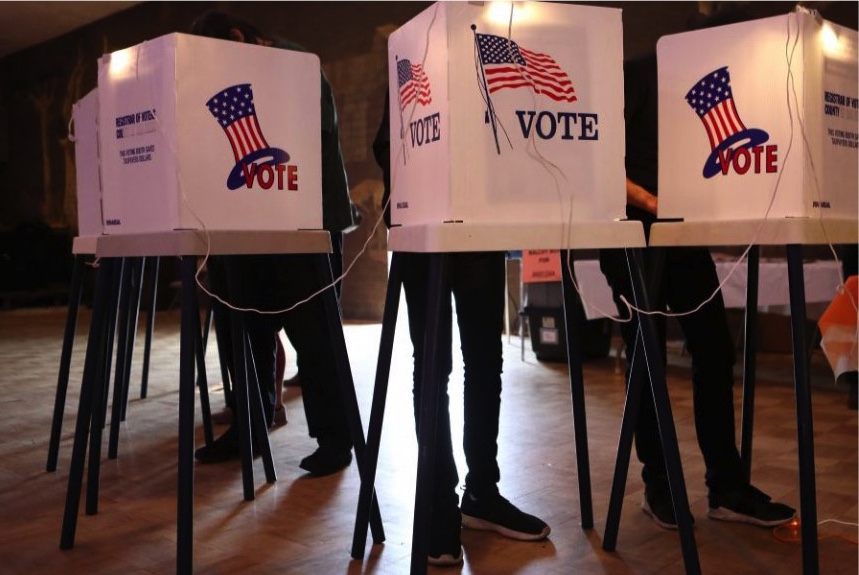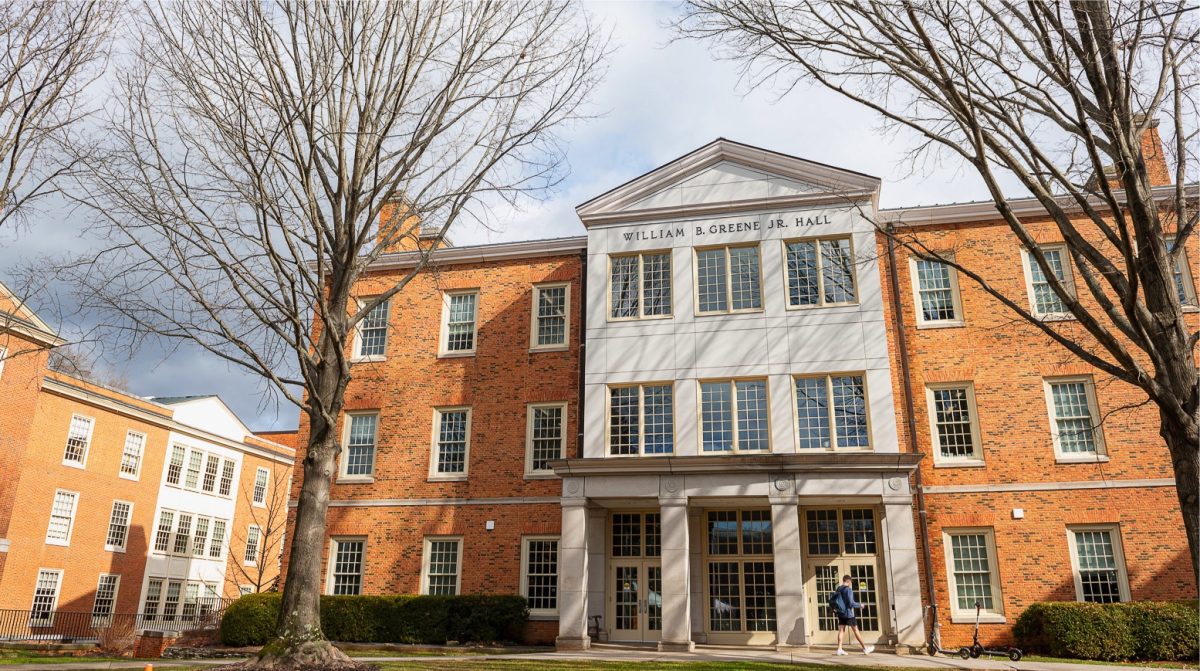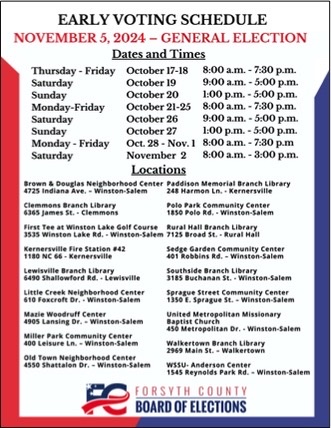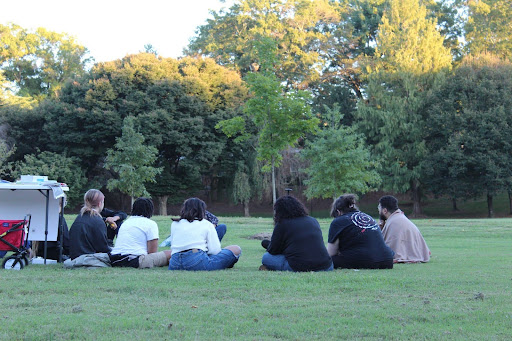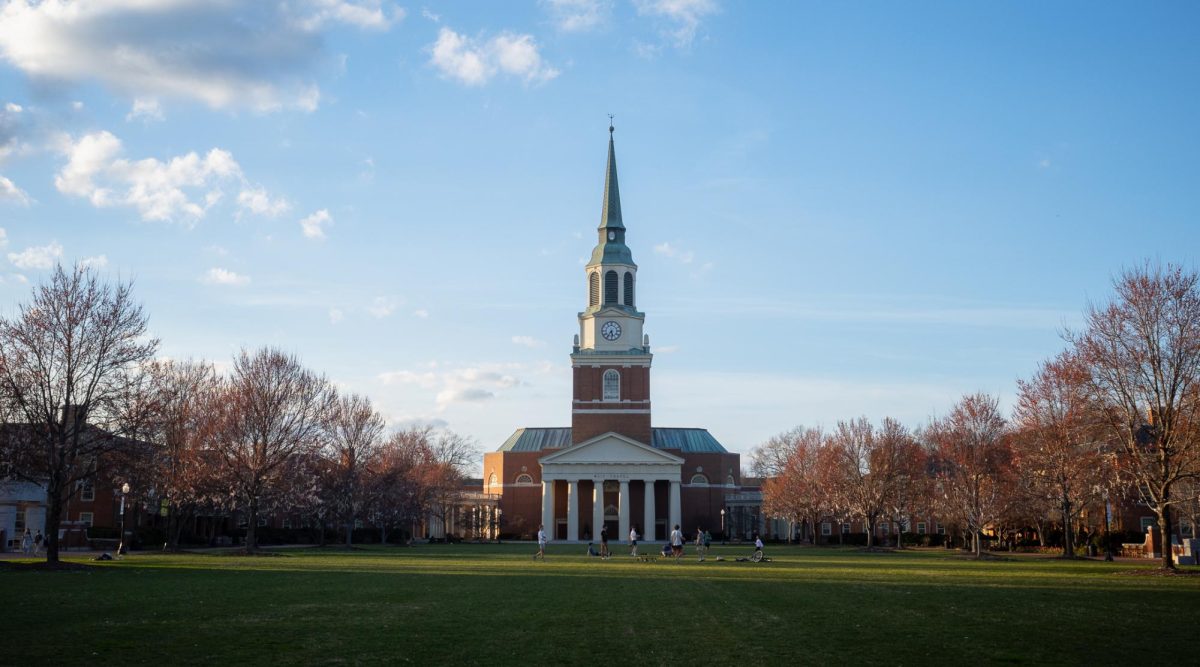Emily Beeland, like most seniors, is working on planning post-graduate life. She has options — pursuing a career at Disney, working at Yellowstone National Park or applying to prestigious programs to teach overseas for a year.
Without her financial aid package, however, she would have never been able to pay the cost of room, board and tuition at Wake Forest, which was $66,754 in the 2017-2018 year. The university is aiming to enroll more students who, like Beeland, are able to attend because of financial aid packages.
However, Wake Forest cannot support all applicants with financial need. Because its admissions process is not need-blind, the Financial Aid and Admissions Offices coordinate to determine how many low-income students are admitted.
In December 2017, Wake Forest joined the American Talent Initiative, a coalition of colleges supported by Bloomberg Philanthropies and coordinated by the Aspen Institute’s College Excellence Program and Ithaka S+R, which proposes to expand access for low- and moderate-income students.
Wake Forest set goals as part of its commitment. They include:
– Increasing the number of Pell-eligible students by 50 percent
– Increasing the share of Pell recipients by greater than 40 percent
– Increasing the share of students who received need-based aid by 25 percent
– Increasing the mean graduation rate for Pell recipients by 12.5 percent
In the 2017-2018 school year, Wake Forest had 505 Pell recipients out of the 5,101 undergraduates, making them 10 percent of the student body. Thirty-one percent of the student body received need-based financial aid.
“The American Talent Initiative is laudable, but we have a long way to go to fulfill that promise and to fulfill that part of our mission,” said Dr. Sara Dahill-Brown of the Politics and International Affairs Department, whose area of expertise is American education, politics and policy.
A 2017 study by the Equality of Opportunity Project used data from the class of 2013 to study access and mobility at colleges in the United States.
– 71 percent of students at Wake Forest come from the top 20 percent of incomes, according to this report.
– 22 percent of students at Wake Forest come from the top 1 percent of incomes.
– 2.3 percent of students at Wake Forest come from the bottom 20 percent of incomes, putting Wake Forest at 53 out of its 65 peers ranked as selective by the study.
The socioeconomic makeup of the student body has generally remained steady over the past two decades, said Bill Wells, Director of the Financial Aid Office.
“We are highly committed to increasing socioeconomic diversity. It’s one of our most important goals,” Wells said.
Nationally, the growing demand for higher education without substantial increases in the number of seats available has created more competitive admission processes. The rising sticker price also represents a barrier to low-income students. Across selective institutions, low- and middle-income students are underrepresented.
The rate at which the university fulfills its goals will be incremental and contingent on the Wake Will Lead campaign, which aims to raise $1 billion by 2020. The size of the endowment is a controlling factor for the number of students on financial aid that Wake Forest can support.
Thus far, $313 million out of the $883 million raised to date has been committed to student financial aid.
“A lot of money is directed by the donor’s interest,” said Brett Eaton, the Executive Director of Wake Will Lead and the Senior Associate Vice President of Communications and External Relations.
Other than financial aid, philanthropic gifts cover costs that tuition alone does not. Money raised by the capital campaign also goes toward facilities updates, academics, programming and faculty support. For example, some is used to retain Wake Forest’s most-experienced faculty and its low faculty-to-student ratio.
Wake Forest has also used some of the money raised for financial aid to change the makeup of student aid packages to include more gifts and less loans.
“It comes down to a hierarchy of values. Which is more important?” Wells said.
The pool of applicants also affects what students are accepted and the socioeconomic makeup of the student body.
Before students reach the college level, there are fewer resources available to lower-income students. Additionally, many low-income, high-achieving students do not apply for selective institutions that they could successfully attend.
“We have to communicate more effectively into high schools that a place like Wake Forest is achievable,” said Dr. Joseph Soares of the Sociology Department, whose research has focused on test-optional admissions.
The Admissions Office has taken steps to broaden the applicant pool to Wake Forest. Increasing access was a major factor in the 2008 decision to become test-optional, and admissions officers visit rural, urban and low-income schools, Martha Allman, Dean of Admissions said in an email response.
Once students from all backgrounds are on campus, a diversity of experiences fosters productive conversations in and out of the classroom. Additionally, access to higher education is often hailed as a critical piece of access and mobility in the United States.
“It is an institutional value in terms of what it is that we provide for society,” Dahill-Brown said.
For some students, this topic is personal.
“If I didn’t have the financial aid I was given, I couldn’t have come,” Beeland said.


